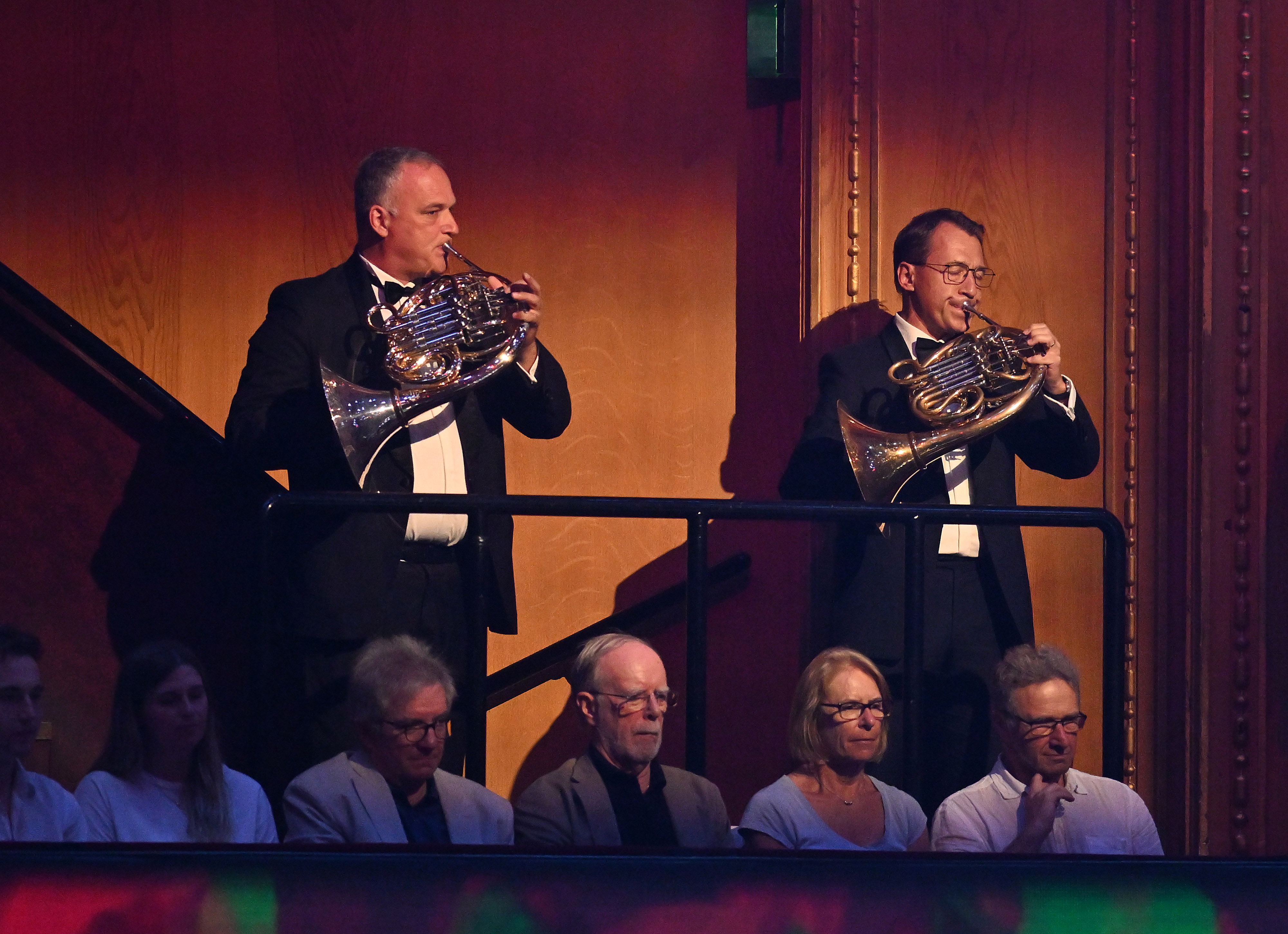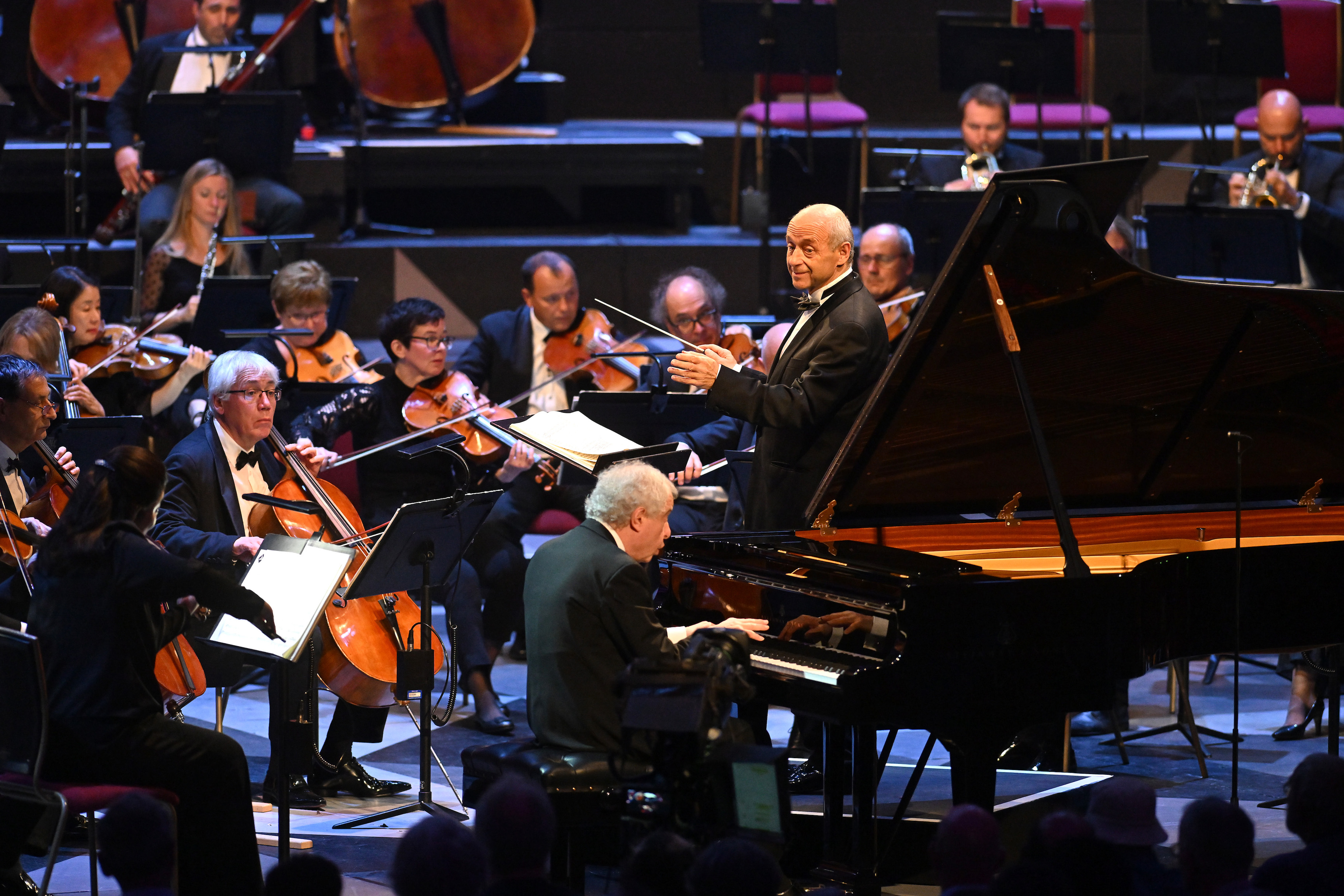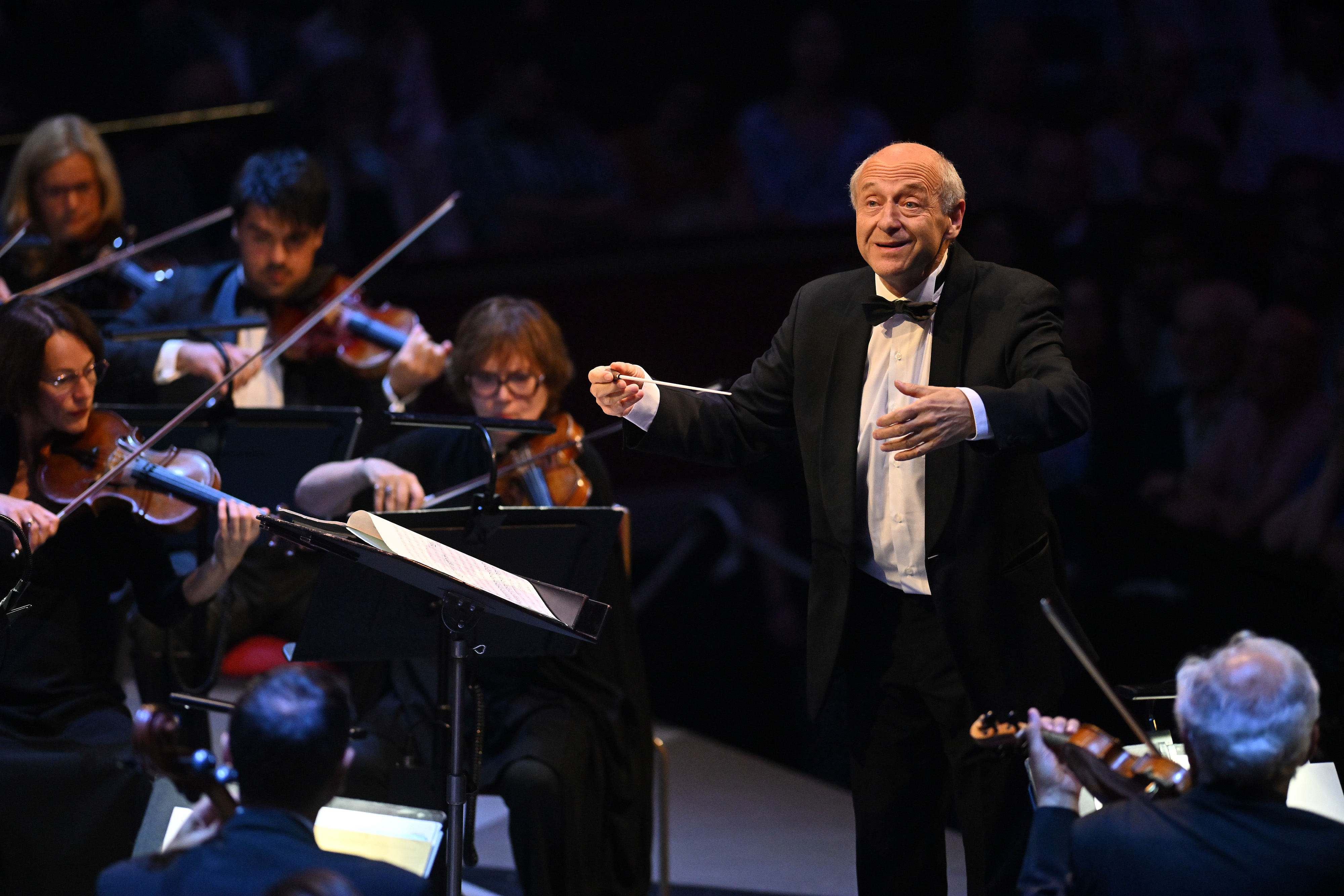Prom 37: Schiff, Budapest Festival Orchestra, Fischer 1 review - landscapes and mindscapes | reviews, news & interviews
Prom 37: Schiff, Budapest Festival Orchestra, Fischer 1 review - landscapes and mindscapes
Prom 37: Schiff, Budapest Festival Orchestra, Fischer 1 review - landscapes and mindscapes
Splendid musical scenery on a spirited Romantic journey
“Very traditional, but fun,” ran the verdict of one fellow-traveller as we waited for a bus outside the Royal Albert Hall on Saturday night. No one can gainsay the infectious fun that the Budapest Festival Orchestra bring to every gig. For all its musical accomplishment, Iván Fischer’s all-singing (yes, they did) if not quite all-dancing (yet) outfit never forget that they belong to a, rather elevated, branch of show business.
As for the “traditional” tag, I might beg to differ. True, for their first Prom (out of three this year) they delivered a triple-decker stack of mainstream Romantic goodies: Weber’s Freischutz overture followed by the Schumann Piano Concerto (with Sir András Schiff) and Mendelssohn’s Third, “Scottish” symphony. Despite the BFO’s creamy, warm and enveloping sound, Mitteleuropa on a high-calorie plate, the agility and audacity of Fischer’s approach to even the most familiar pieces means that every outing for a venerable warhorse can feel like a frisky reinvention.
If the two outer works transported us to the iconic Romantic landscapes of the spooky German forests, and the rugged Scottish Highlands, Schiff’s Schumann tracked a path through the divided soul – here, more merrily than tragically – of the composer. In Weber’s ten-minute blockbuster, an entire opera in miniature, a horn quartet placed on high beside the organ (pictured below) supplied the evening's first touch of Budapest theatricality. From parping trombones to eerie clarinets and rolling timpani, with a mighty battery of basses at the back, Fischer drew fresh, invigorating timbres and textures from his band. Weber’s Gothic mood-music never descended into corny melodrama: the Budapesters kept their light and droll touch even in the darkest thickets of the supernatural woods. 
Schiff (pictured below) somehow sounded both skittish and musing – the rival personalities of Florestan and Eusebius, here harmoniously fused. As for the closing Allegro vivace, Fischer injected a bouncing, skipping drive as Schiff, mercurial but urbane, commanded the outlandish rhythmic jumps and swerves. Fine-rolled timpani led into valedictory tutti imbued by Fischer with a surging but never heavy-handed energy. After that, two surprise encores, BFO-style: Schiff accompanied the orchestra members who sweetly sang one of Brahms’s Zigeunerlieder, then played the Happy Farmer from Schumann’s Album für die Jugend. Fun is fine, but on such an occasion you must sprinkle it with wit and grace. Fischer and Schiff do.

rating
Share this article
The future of Arts Journalism
You can stop theartsdesk.com closing!
We urgently need financing to survive. Our fundraising drive has thus far raised £49,000 but we need to reach £100,000 or we will be forced to close. Please contribute here: https://gofund.me/c3f6033d
And if you can forward this information to anyone who might assist, we’d be grateful.

Subscribe to theartsdesk.com
Thank you for continuing to read our work on theartsdesk.com. For unlimited access to every article in its entirety, including our archive of more than 15,000 pieces, we're asking for £5 per month or £40 per year. We feel it's a very good deal, and hope you do too.
To take a subscription now simply click here.
And if you're looking for that extra gift for a friend or family member, why not treat them to a theartsdesk.com gift subscription?
more Classical music
 BBC Proms: Suor Angelica, LSO, Pappano review - earthly passion, heavenly grief
A Sister to remember blesses Puccini's convent tragedy
BBC Proms: Suor Angelica, LSO, Pappano review - earthly passion, heavenly grief
A Sister to remember blesses Puccini's convent tragedy
 BBC Proms: A Mass of Life, BBCSO, Elder review - a subtle guide to Delius's Nietzschean masterpiece
Mark Elder held back from blasting the audience with a wall of sound
BBC Proms: A Mass of Life, BBCSO, Elder review - a subtle guide to Delius's Nietzschean masterpiece
Mark Elder held back from blasting the audience with a wall of sound
 BBC Proms: Le Concert Spirituel, Niquet review - super-sized polyphonic rarities
Monumental works don't quite make for monumental sounds in the Royal Albert Hall
BBC Proms: Le Concert Spirituel, Niquet review - super-sized polyphonic rarities
Monumental works don't quite make for monumental sounds in the Royal Albert Hall
 Frang, Romaniw, Liverman, LSO, Pappano, Edinburgh International Festival 2025 review - sunlight, salt spray, Sea Symphony
Full force of the midday sea in the Usher Hall, thanks to the best captain at the helm
Frang, Romaniw, Liverman, LSO, Pappano, Edinburgh International Festival 2025 review - sunlight, salt spray, Sea Symphony
Full force of the midday sea in the Usher Hall, thanks to the best captain at the helm
 Elschenbroich, Grynyuk / Fibonacci Quartet, Edinburgh International Festival 2025 review - mahogany Brahms and explosive Janáček
String partnerships demonstrate brilliant listening as well as first rate playing
Elschenbroich, Grynyuk / Fibonacci Quartet, Edinburgh International Festival 2025 review - mahogany Brahms and explosive Janáček
String partnerships demonstrate brilliant listening as well as first rate playing
 BBC Proms: Akhmetshina, LPO, Gardner review - liquid luxuries
First-class service on an ocean-going programme
BBC Proms: Akhmetshina, LPO, Gardner review - liquid luxuries
First-class service on an ocean-going programme
 Budapest Festival Orchestra, Iván Fischer, Edinburgh International Festival 2025 review - mania and menuets
The Hungarians bring dance music to Edinburgh, but Fischer’s pastiche falls flat
Budapest Festival Orchestra, Iván Fischer, Edinburgh International Festival 2025 review - mania and menuets
The Hungarians bring dance music to Edinburgh, but Fischer’s pastiche falls flat
 Classical CDs: Hamlet, harps and haiku
Epic romantic symphonies, unaccompanied choral music and a bold string quartet's response to rising sea levels
Classical CDs: Hamlet, harps and haiku
Epic romantic symphonies, unaccompanied choral music and a bold string quartet's response to rising sea levels
 Kolesnikov, Tsoy / Liu, NCPA Orchestra, Chung, Edinburgh International Festival 2025 review - transfigured playing and heavenly desire
Three star pianists work wonders, and an orchestra dazzles, at least on the surface
Kolesnikov, Tsoy / Liu, NCPA Orchestra, Chung, Edinburgh International Festival 2025 review - transfigured playing and heavenly desire
Three star pianists work wonders, and an orchestra dazzles, at least on the surface
 BBC Proms: Láng, Cser, Budapest Festival Orchestra, Iván Fischer review - idiomatic inflections
Bartók’s heart of darkness follows Beethoven’s dancing light
BBC Proms: Láng, Cser, Budapest Festival Orchestra, Iván Fischer review - idiomatic inflections
Bartók’s heart of darkness follows Beethoven’s dancing light
 Weilerstein, NYO2, Payare / Dueñas, Malofeev, Edinburgh International Festival 2025 review - youthful energy and emotional intensity
Big-boned Prokofiev and Shostakovich, cacophonous López, plus intense violin/piano duo
Weilerstein, NYO2, Payare / Dueñas, Malofeev, Edinburgh International Festival 2025 review - youthful energy and emotional intensity
Big-boned Prokofiev and Shostakovich, cacophonous López, plus intense violin/piano duo

Add comment